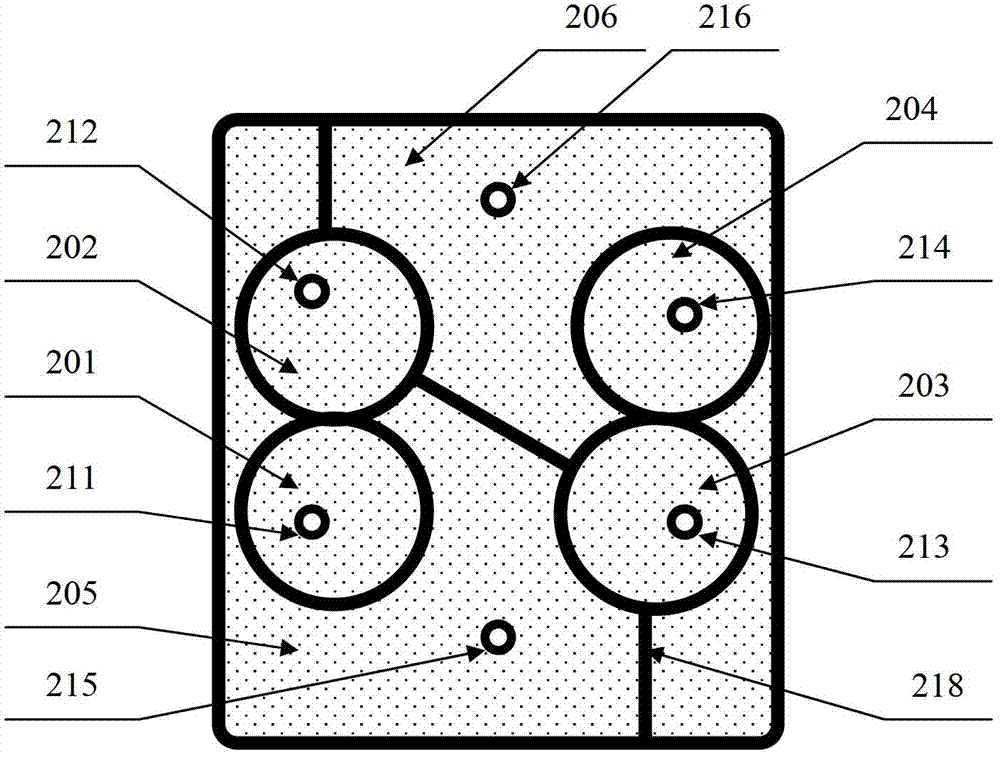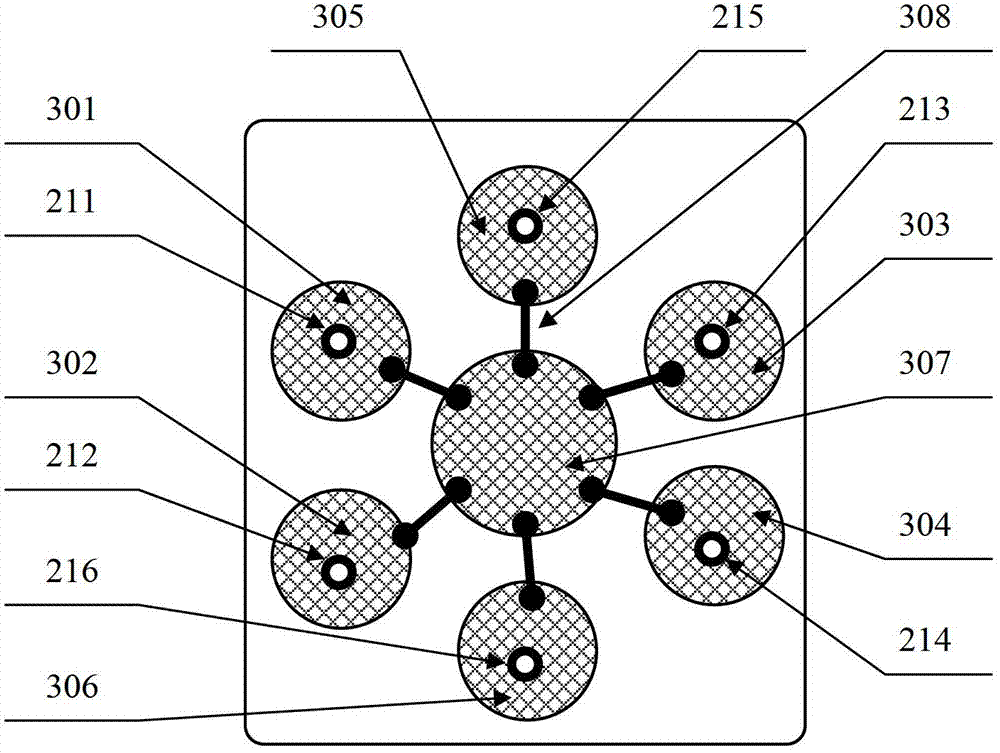Microfluidic time-resolved fluorescence immunoassay device and application thereof
A time-resolved fluorescence and immunoassay technology, applied in the field of immunology, can solve the problems of high instrument use, high maintenance requirements, high comprehensive use cost, complex instrument structure, etc., and achieves improved experimental biological safety, simple structure, and simplified detection system. Effect
- Summary
- Abstract
- Description
- Claims
- Application Information
AI Technical Summary
Problems solved by technology
Method used
Image
Examples
Embodiment 1
[0058] Example 1: Microfluidic time-resolved fluorescent immunoassay device
[0059] Such as figure 1 , figure 2 and image 3 As shown, a microfluidic time-resolved fluorescent immunoassay device includes a sample loading unit 101, a microfluidic control unit 103, a detection unit 104, and a microfluidic chip 102 driven by a membrane pump. The microfluidic chip 102 is located in the microfluidic chip holder on the analysis workbench of the microfluidic control unit 103 .
[0060] The microfluidic core 102 includes the following six pools: a sample pool 201, a diluent pool 202, a marker pool 203, a dissociation pool 204, a cleaning pool 205, and a waste pool 206, wherein the sample pool 201 is provided with a sample valve 301 and sample through-hole 211, diluent valve 302 and diluent through-hole 212 are provided in diluent pool 202, mark liquid valve 303 and mark liquid through-hole 213 are provided in mark liquid pool 203, dissociation liquid pool 204 is provided with D...
Embodiment 2
[0064] Embodiment 2: Measuring hepatitis B virus surface antigen with the device of embodiment 1
[0065] 1. Coating antibody: the antibody is anti-hepatitis B virus surface antigen (anti-HBs) monoclonal antibody
[0066] 1) Dilute the antibody 1:6000 times for coating with 50mM sodium carbonate-sodium bicarbonate buffer solution pH9.6, and set aside;
[0067] 2) Add the diluted antibody into the sample pool at 100 μl / well;
[0068] 3) The sample pool is placed in a 4°C environment and coated for 20 hours;
[0069] 4) After the coating is completed, wash 2 times with the washing liquid at 300 μl / well, and the washing liquid composition is 10 mM PBS at pH 7.4 containing 5% Tween-20 (volume ratio);
[0070] 5) After washing, place the sample pool on absorbent filter paper to absorb the remaining solution, then add blocking solution to the sample pool at an amount of 150 μl / well, and block for 2 hours at room temperature. 1%BSA (bovine serum albumin);
[0071] 6) After the se...
Embodiment 3
[0099] Embodiment 3: Measuring hepatitis B virus surface antigen with the device of embodiment 1
[0100] In step 4, the cleaning process is as follows: the one-way pump 405 works in one direction from the sample pool to the cleaning liquid pool, and sucks the cleaning liquid into the sample pool 201 .
[0101] With the diluent pool 202 as the cleaning buffer pool, the sample pool 201 first gets rid of the waste liquid, sucks the cleaning liquid, then closes the one-way pump sample cleaning pump 405 and the one-way pump sample waste liquid pump 406; starts the two-way pump 402 to make the cleaning liquid in Flow between the sample pool 201 and the diluent pool 202 for cleaning; the cleaning liquid is in the sample pool 201 when stopped.
[0102] Other steps are the same as in Example 2.
PUM
 Login to View More
Login to View More Abstract
Description
Claims
Application Information
 Login to View More
Login to View More - R&D
- Intellectual Property
- Life Sciences
- Materials
- Tech Scout
- Unparalleled Data Quality
- Higher Quality Content
- 60% Fewer Hallucinations
Browse by: Latest US Patents, China's latest patents, Technical Efficacy Thesaurus, Application Domain, Technology Topic, Popular Technical Reports.
© 2025 PatSnap. All rights reserved.Legal|Privacy policy|Modern Slavery Act Transparency Statement|Sitemap|About US| Contact US: help@patsnap.com



